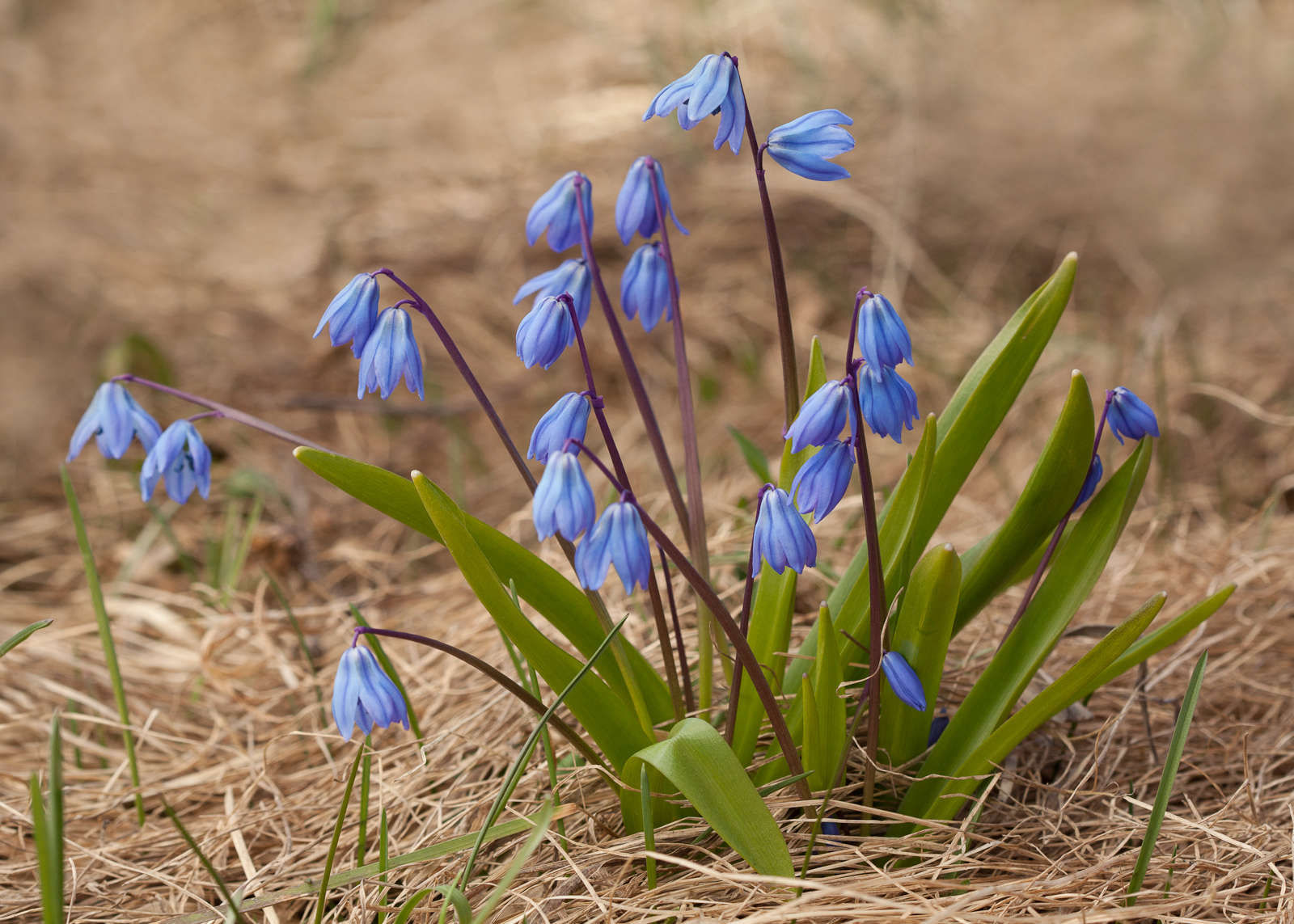

Siberian Squill, Scilla siberica “The Survivor”
Siberian Squill, Scilla siberica “The Survivor”
With its small, bell-shaped blue blossoms surrounded by gray-green leaves like tiny spears, Siberian squill is a woodland flower that thrives in cold climates and can endure long winters (it even thrives north of the Arctic circle).
With its small, bell-shaped blue blossoms surrounded by gray-green leaves like tiny spears, Siberian squill is a woodland flower that thrives in cold climates and can endure long winters (it even thrives north of the Arctic circle).
Photograph by Kain Kalju via Flickr.
Photograph by Kain Kalju via Flickr.
In autumn, plant bulbs only several inches deep, spaced three to six inches apart. It naturalizes happily and can overtake woodland areas as it self-propagates throughout its blooming season.
In autumn, plant bulbs only several inches deep, spaced three to six inches apart. It naturalizes happily and can overtake woodland areas as it self-propagates throughout its blooming season.
Siberian squill blooms in Hueston Woods State Park in southwestern Ohio.
Siberian squill blooms in Hueston Woods State Park in southwestern Ohio.
Photograph by Andrew C via Flickr.
Photograph by Andrew C via Flickr.
S. siberica has nodding blue heads that give an immediate impression of calm and cool.
S. siberica has nodding blue heads that give an immediate impression of calm and cool.
Photograph by Dan4th Nicholas via Flickr.
Photograph by Dan4th Nicholas via Flickr.
In spring, with almost no effort on your part—the bulbs have minimal water and sun needs, growing naturally in deep shade—your garden will be cloaked in tranquil blue buds.
In spring, with almost no effort on your part—the bulbs have minimal water and sun needs, growing naturally in deep shade—your garden will be cloaked in tranquil blue buds.
Keep It Alive
Keep It Alive
Photograph by Olga via Flickr.
Photograph by Olga via Flickr.
With its vivid blue color and low height (four to six inches), squill is an ideal flower to plant en masse beneath a tree or other landscape feature on which you want to focus attention in early spring.
With its vivid blue color and low height (four to six inches), squill is an ideal flower to plant en masse beneath a tree or other landscape feature on which you want to focus attention in early spring.
Photograph by Andres Papp via Flickr.
Photograph by Andres Papp via Flickr.
Siberian squill will form clumps as it spreads in the garden.
Siberian squill will form clumps as it spreads in the garden.